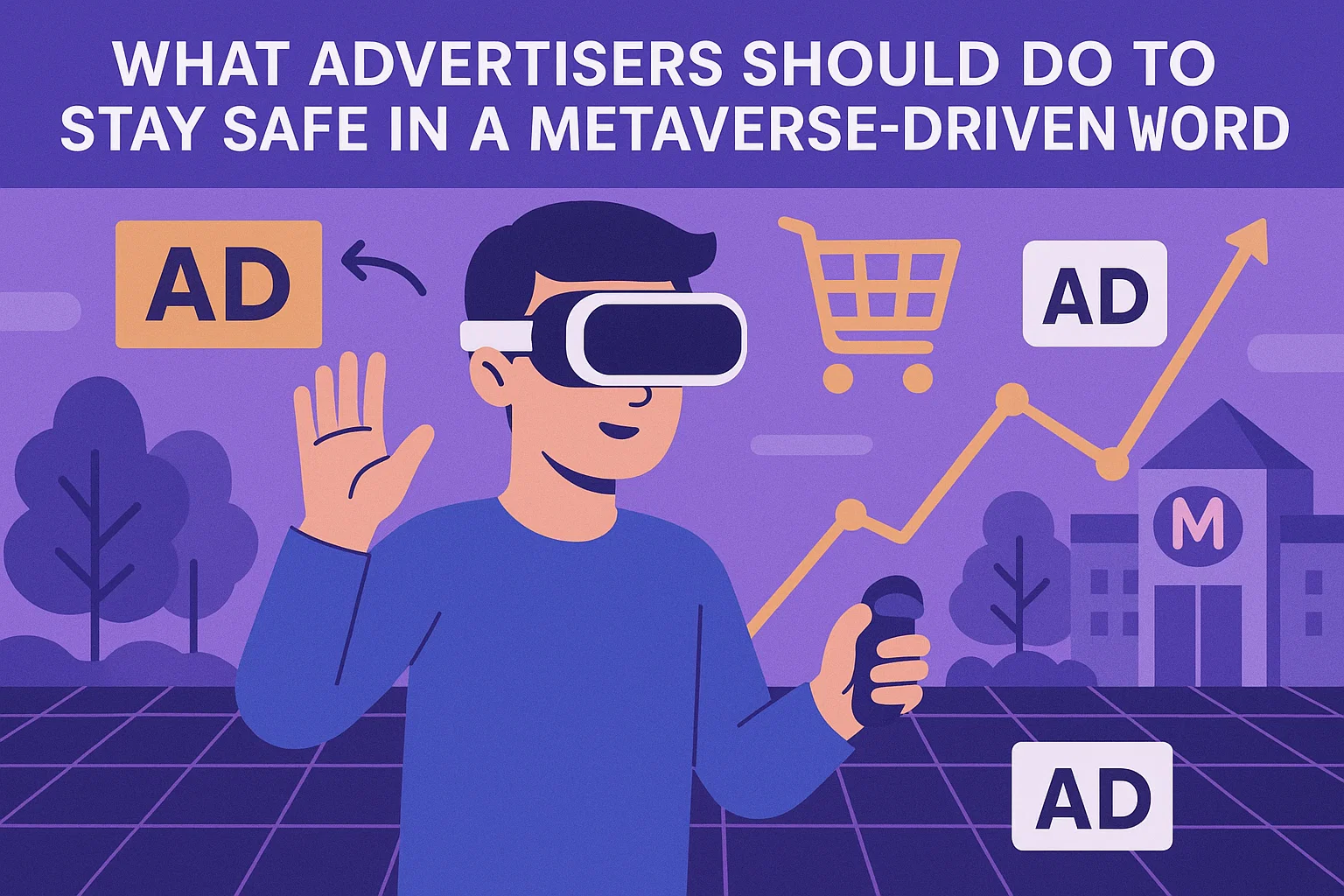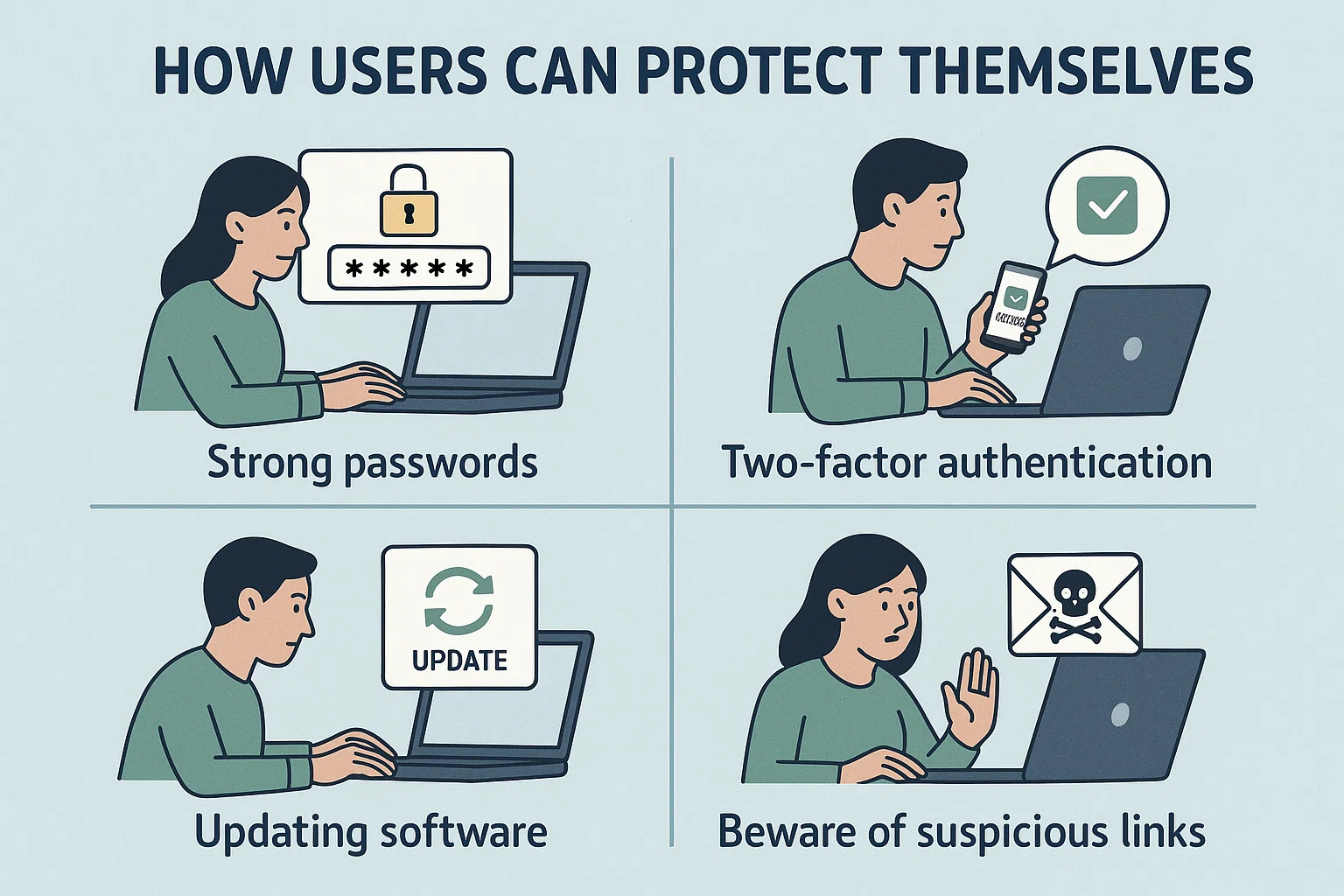When we talk about scam metaverse style, we refer to advertising strategies that borrow from the visionary promise of the metaverse—immersive experiences, avatar-driven interaction, virtual assets and alternate realities—to package and promote fraudulent schemes. These are no longer simple banner ads promising quick cash; they are narratives built around virtual land, NFTs, fake digital currencies, avatar influencers and immersive platforms. The metaverse aesthetic enables scammers to lend legitimacy to hollow offerings, to bypass critical user scepticism and to piggy-back on the hype surrounding virtual worlds.
The reason this term matters is two-fold. First, it alerts us to the evolution of scam tactics: from email phishing and pop-ups to immersive, visually sophisticated experiences. Second, it connects that evolution directly to companies like Meta, whose platforms, advertising systems and upcoming metaverse ambitions provide fertile ground for such schemes.
Why Meta Is A Central Player in the Scam Metaverse Style Phenomenon
Why Meta’s Platforms Are So Attractive to Fraudsters
Meta’s footprint across social media, messaging and now virtual-reality platforms gives it unique appeal to fraud operations. Hundreds of millions of users log into Facebook, Instagram and WhatsApp every day. Internal documents suggest a startling figure: Meta projected that around 10 % of its 2024 revenue would be derived from advertising tied to scams and prohibited goods—around US $16 billion.
The convergence of mass reach, sophisticated ad targeting and relative under-enforcement (at least until recently) created an environment where scam advertisements flourish. For example, one document reportedly shows Meta showing its users roughly 15 billion “higher-risk” scam-ads each day.
The Metaverse Angle: A New Layer of Risk
As Meta (and others) push their vision of the metaverse—virtual worlds with avatars, NFTs, digital real-estate and immersive experiences—the opportunities for scam metaverse style advertising multiply. Fraudsters now tie their schemes to the language of the metaverse: “invest in virtual land,” “own your avatar’s NFT,” “join the future of digital property.” The legitimacy associated with the metaverse hype can be used to mask fraudulent intentions.
A study of emerging trends in metaverse ad fraud outlines techniques like avatar impersonation, bot swarms, wash-trading of NFTs and immersive impression fraud. In other words, meta-platforms and metaverse-style experiences aren’t just facilitating normal ads—they’re enabling a new frontier of scam advertising.
Meta’s Governance and Enforcement Gaps
Meta’s own policies prohibit fraud and scams. For example, its “Fraud & Scams” policy states that ads must not promote deceptive practices such as pyramid schemes, fake investment offers or misleading earnings. However, internal documents and investigative reporting raise questions about how consistently these rules are applied. One document reportedly said that Meta only bans advertisers when its algorithm is at least 95 % sure of fraud; if certainty is lower, Meta may simply charge higher ad rates to the suspect advertiser rather than shut them down.
This regulatory tension—between revenue growth through advertising on one hand and user-safety/enforcement on the other—helps explain why scam metaverse style advertising has become such a lucrative phenomenon for Meta’s ad business.
How Advertising Fraudulent Schemes Works in a Metaverse-Style World
Virtual Real-Estate Scam Ads & NFT Offerings
Imagine an ad promising “Buy virtual land in the next metaverse—double your investment in 90 days.” This type of campaign uses the metaverse aesthetic: avatars, 3D renderings, “limited edition digital parcels,” VIP access. What’s often hidden: no real underlying asset, a secondary market that doesn’t exist, and a rush to get in before “everyone else does.” Fraud operations can exploit hype, FOMO and the lack of regulatory clarity around virtual assets.
Academic research on NFT promotion scams found that bot-driven promotion services inflated likes and retweets of fraudulent projects, misleading real users into investing in non-existent value. In the metaverse context, ads designed in the style of virtual-world marketing can accelerate and legitimize the illusion.
Avatar Impersonation, Bot Swarms and Virtual Event Ads
Another facet of scam metaverse style advertising involves avatar impersonation or bot-induced engagements. Fraudsters create avatars that appear legitimate, host virtual events or webinars, and simulate engagement to lure users into investments or purchases. A recent guide notes avatar impersonation, bot swarms and immersive impression fraud as top metaverse ad-fraud tactics.
For example, a user might see an ad: “Join our exclusive metaverse trading session with celebrity avatars—earn X today.” Beneath the surface is a conversion funnel into a fraudulent or high-risk scheme.
Exploitative Targeting & Algorithmic Amplification
Meta’s ad-targeting system is highly refined. A fraudster can target users based on location, interests, past behaviours, digital-asset interest, etc. Combine this with metaverse-style ads (avatars, virtual land, NFTs) and you’ve got highly tailored fraudulent campaigns that feel personally relevant. That means an ordinary user may see a “metaverse investment” ad that seems custom-fit—and be more easily persuaded. Meta’s internal documents suggest this is part of the problem: the combination of scale, targeting and enforcement gaps.
Revenue Incentives & Penalty Mechanics
Meta reportedly created a “penalty rate” system: instead of immediately rejecting suspicious advertisers, it charges them higher ad rates when certainty of fraud is lower than the 95 % threshold. In effect, the platform monetizes more ad impressions from advertisers with elevated risk, rather than refusing them entirely.
This system demonstrates how advertising fraudulent schemes under a metaverse style umbrella can still thrive—for the platform—because the ad business treats scams not purely as attacks on users, but as revenue streams.
The Scale of the Problem: Billions at Stake
Internal Documents & Revenue Estimates
The scale of the scam metaverse style phenomenon within Meta’s ecosystem is enormous. Internal documents reviewed (via reporting) show that Meta projected around 10 % of its 2024 revenue to come from ads linked to scams and banned goods—roughly US $16 billion.
In one case, a December 2024 document reportedly estimated Meta’s platforms showed about 15 billion “higher-risk” scam ads per day.
Wider Fraud Impact & Regulatory Implications
Beyond Meta’s internal numbers, broader research shows that ad fraud in virtual/immersive environments is a growing threat. The rise of “Darkverse” research frames the metaverse as a new playground for illicit activity including fraud, scams and illicit marketplaces.
Regulators are paying attention: for example, in the UK and U.S., investigations are underway into Meta’s role in facilitating user losses through scam ads.
Why Advertisers and Users Are Losing Money
Advertisers who unwittingly (or knowingly) bid on ad inventory tainted by fraudulent impressions, bot traffic or avatar spam are losing money because their ROI is distorted. Users who respond to scam-style metaverse ads may invest in fake digital assets, virtual land that has no liquidity, or schemes that vanish when it’s too late. Meanwhile the platform gets paid.
Thus, the scam metaverse style advertising model creates a triangular harm: users are defrauded or misled, advertisers lose budget and credibility, and the platform profits—at least until regulatory or reputation penalties kick in.
Why Other Platforms Are Not as Vulnerable — Or Are They?
While Meta stands out due to its scale and internal disclosures, other platforms also face risk of metaverse-style scam ads. However, several factors give Meta a unique combination of vulnerability:
-
Its huge global reach across apps and messaging services
-
The high efficiency of its ad-targeting and automated systems
-
The ambition (and branding) around the “metaverse” which aligns with the narrative fraudsters exploit
-
Enforcement gaps or threshold-based moderation systems
That said, the risk of scam metaverse style ads isn’t limited to Meta—it’s systemic in digital advertising. But the voice and scale of Meta make it a headline case and a cautionary example.
What Can Be Done to Combat Scam Metaverse Style Advertising?
Stronger Platform Enforcement and Transparency
Meta and similar platforms must shift from a revenue-first mindset to a user-safety-first framework. That means reducing reliance on penalty-fee systems for suspect advertisers, improving real-time detection of avatar/bot networks, and being transparent about ad inventory quality.
Meta’s policy on Fraud & Scams is sound on paper, but enforcement needs to match the policy. Brands advertising on Meta’s platforms (and other immersive/virtual channels) must ask: am I appearing alongside or supporting ads that look metaverse-style but are fraudulent? Agencies should audit ad placements, review the audiences, and consider the possibility of being associated—inadvertently—with scam-laden environments.
User Education and Awareness
End-users must recognise the hallmarks of scam metaverse style advertising: unrealistic promises of virtual-asset gains, “exclusive” virtual events with celebrity avatars, urgency, limited edition claims tied to the metaverse buzz, and pressure to act fast without verification. By empowering users to question these ads, some fraud can be mitigated.
Industry & Regulatory Collaboration
Given the scale and complexity of metaverse-style fraud, a collaborative regulatory approach is needed. Governments, industry bodies, ad-tech firms and platforms should work together to establish standards for verifying virtual-asset ads, identifying bot/ avatar networks and enforcing accountability. Research on the “Darkverse” underscores that without proactive regulation, virtual worlds may become fraud vectors.
Potential Red Flags of Scam Metaverse Style Ads to Watch For
When evaluating ads in a metaverse context (or even on social media), users, advertisers or platforms should watch for these red flags:
-
Promised returns tied to virtual properties or NFTs, e.g., “Buy virtual land, earn 200% in 30 days.”
-
Celebrity or avatar endorsements that are unverifiable, especially within a virtual-asset scheme.
-
Bot-driven engagement metrics: thousands of comments, likes or avatars active at odd hours, few real-world references.
-
Virtual events or immersive experiences that require payment upfront for “exclusive access” to a virtual summit or club, promising investment opportunities.
-
Urgency and scarcity messaging, e.g., “Last 10 parcels available in our metaverse country—act now.”
-
Poor transparency around the underlying asset: What is the value of this virtual land? Who controls it? What’s the exit mechanism?
-
Ads placed through sophisticated platforms but redirecting to external sites that ask for wallet keys, upfront payment or questionable credentials.
-
Use of metaverse aesthetic or buzzwords (avatars, virtual reality, crypto-land, limited edition NFT) to lend legitimacy to a suspicious scheme.
Recognising these signs helps stem the spread of scam metaverse style advertising and protects both users and brands.
The Broader Impact: Why This Matters Beyond Meta
Erosion of Trust in Virtual Worlds
The promise of immersive metaverse platforms is enormous: social connection, digital ownership, new economies. But if those spaces become riddled with scams, users will retreat. That undermines future innovation and investment in the metaverse ecosystem. When scam metaverse style advertising proliferates unchecked, it undermines the credibility of the entire virtual world narrative.
Advertising Ecosystem Integrity
Advertisers invest huge sums in digital and virtual-world advertising. If a significant portion of that spend is funnelled into fraudulent schemes, the value proposition of digital advertising weakens. ROI drops, brand safety concerns increase, long-term trust declines. Meta’s own projection of billions in scam-ad-linked revenue suggests systemic risk for the ad-industry. Regulatory and Legal Consequences
Platforms found to facilitate large volumes of fraudulent advertising risk regulatory action, lawsuits and reputational damage. Meta is already under investigation in several jurisdictions. The interplay between metaverse style advertising and fraudulent schemes may accelerate regulatory scrutiny around virtual assets, digital-advertising governance and platform liability.
Consumer Harm and Financial Loss
At the end of the day, ordinary users are losing real money. Whether they invest in a fake virtual parcel, send crypto to a bogus avatar-run fund, or buy into an “exclusive” metaverse event that never delivers—each of these is a real harm facilitated by scam metaverse style advertising. The scale of such ads on Meta’s platforms implies user losses are non-trivial and growing.
What Advertisers Should Do to Stay Safe in a Metaverse-Driven World

For brands navigating the overlapping worlds of social-media and metaverse-style advertising, here are actionable steps:
-
Conduct a brand-safety audit: Know which placements and publishers you are using, and whether they may be adjacent to high-risk, metaverse-style campaigns.
-
Insist on transparency from ad platforms: Ask for detailed reporting, viewability metrics, fraud-detection stats, and proof of genuine human engagement.
-
Avoid “too good to be true” virtual-asset hype: If an ad promises enormous returns simply because it’s “metaverse land” or “avatar investment,” treat it with extreme caution.
-
Educate your in-house and agency teams on the scam metaverse style phenomenon: Recognising the pattern of avatar-based, immersive-looking, high-return ads helps you avoid being complicit.
-
Diversify ad inventory: Do not rely solely on early-stage metaverse channels or unverified virtual platforms. Balanced media plans reduce exposure to high-fraud risk zones.
-
Collaborate with platforms to monitor for bot traffic, avatar impersonation and suspicious engagement spikes associated with your placements.
-
Maintain clear messaging and disclaimers: If you run virtual-world or metaverse-style promotions, ensure the underlying value, risk and ownership structure is clearly communicated.
By proactively adopting these measures, advertisers can insulate themselves from being inadvertently part of the scam metaverse style issue.
How Users Can Protect Themselves

If you’re an individual user encountering metaverse-style investment offers or immersive ads on Meta’s platforms, here’s how to stay safe:
-
Always ask: what real-world asset am I buying or investing in? Is the value intrinsic or speculative?
-
Verify the issuer of the offer: Are they publicly documented, licensed or transparent?
-
Check for independent reviews or warnings about the program or platform being advertised.
-
Avoid giving upfront payments, crypto wallet keys or personal information to avatar-run virtual events.
-
Be especially cautious when an ad uses the metaverse aesthetic (virtual land, NFTs, digital avatars, limited-edition virtual items) and promises very high returns with little risk.
-
Use strong login-security, avoid clicking unknown links, report suspicious ads to the platform.
-
Recognise that if something is hyped as “metaverse opportunity,” it may be leveraging novelty and hype to obscure risk.
By staying vigilant, users can reduce their exposure to the harms of scam metaverse style advertising.
What’s Next for Scam Metaverse Style Ads and Meta
As Meta expands its metaverse ambitions—through platforms like Horizon Worlds and its investment in virtual-reality hardware—the scope for scam metaverse style advertising may deepen. Fraudsters will likely evolve to exploit avatar ecosystems, virtual event platforms, NFT marketplaces and immersive ad placements. Research into the “Darkverse” concept warns of a future where illicit activity embeds within virtual spaces disguised as legitimate engagement.
Regulators will ramp up oversight—platform liability, ad-fraud auditing, metaverse-asset regulation and consumer-protection laws will converge. Platforms that fail to adapt may face heavy penalties or loss of user trust. Meta’s own admission of significant ad-revenue from scam-linked campaigns suggests a structural challenge: if the ad-business model depends in part on high-risk inventory, how will it pivot to safer models while maintaining profitability?
For advertisers, the key will be choosing platforms and placements carefully, prioritising transparency and value, even in emerging metaverse channels. For users, the key will remain awareness and scepticism. And for platforms like Meta, the future will demand proving that their metaverse-style ecosystems are safe, legitimate and not feeding a fraud economy.
Conclusion
The phenomenon of scam metaverse style advertising marks a troubling evolution in the digital-fraud landscape—a convergence of immersive virtual-world themes, avatar-driven engagement, ad-targeting scale and monetisation incentives. Meta’s platforms, owing to their scale and ambition, sit at the heart of this storm, profiting from ad inventory tied to fraudulent or high-risk schemes while simultaneously being challenged on enforcement and brand-safety grounds.
But awareness is power. Advertisers, users and platforms must recognise the pattern, demand accountability, adopt safeguards and push for transparency. As the metaverse vision proceeds, we must ensure it doesn’t become a playground for scams. If you’re an advertiser seeking safe channels or a user navigating virtual-asset offers, now is the time to act.
Also Read: What Are Web3 Applications? Look on the Internet Future


